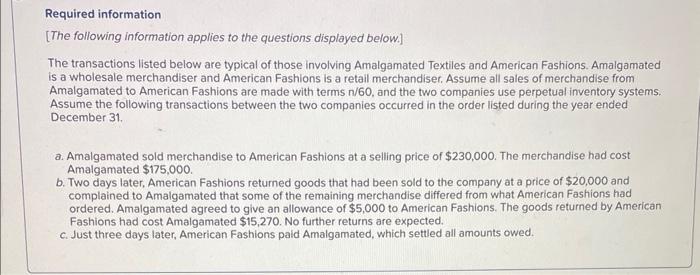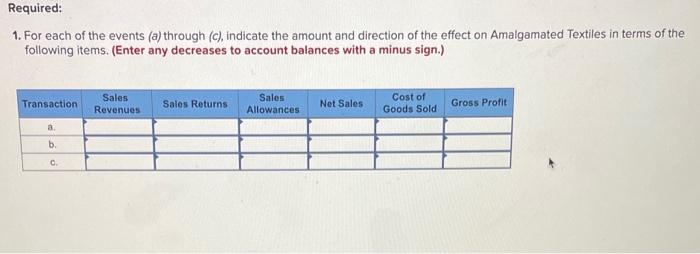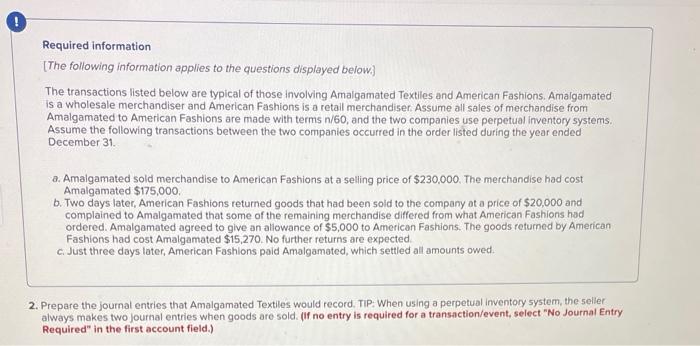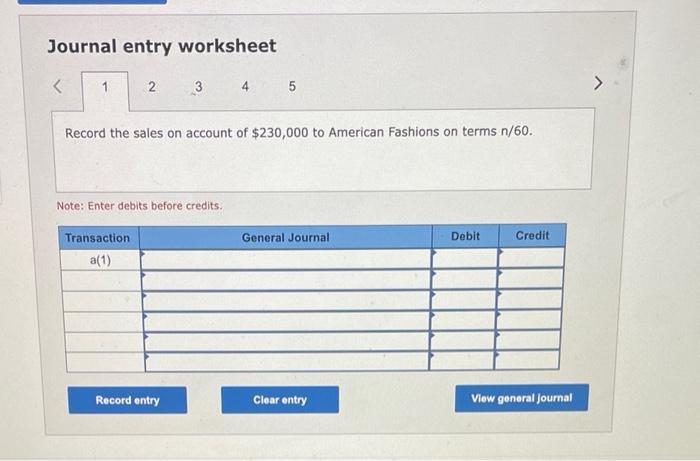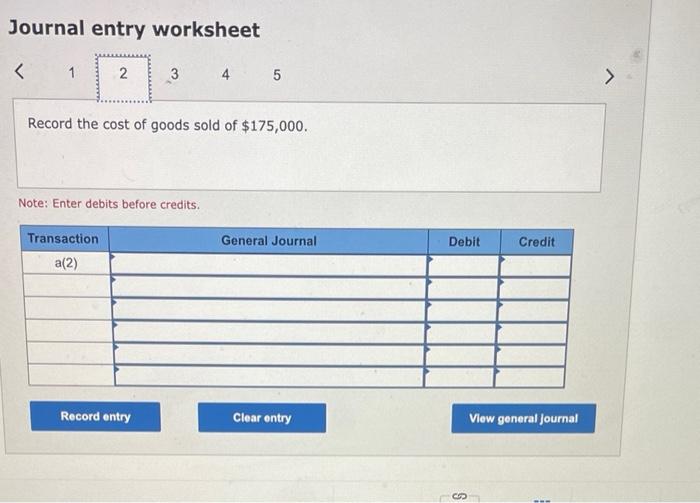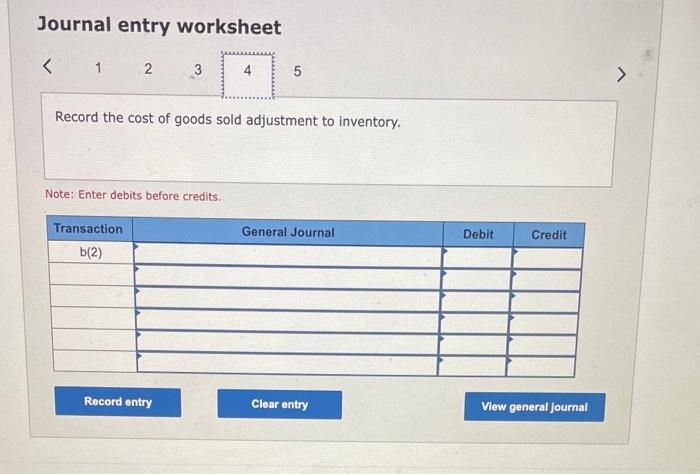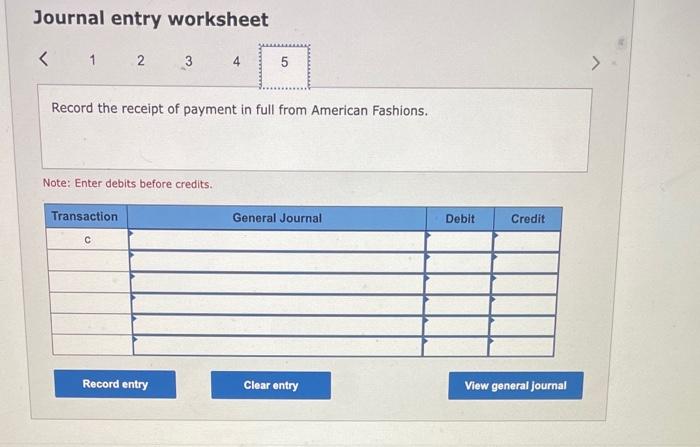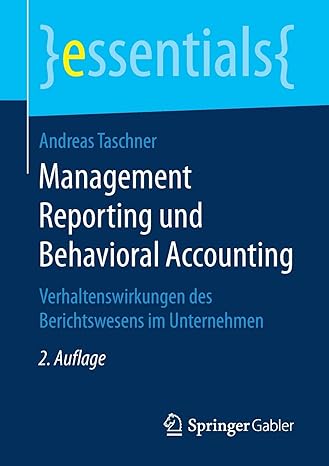Required information [The following information applies to the questions displayed below.] The transactions listed below are typical of those involving Amalgamated Textiles and American Fashions. Amalgamated is a wholesale merchandiser and American Fashions is a retail merchandiser. Assume all sales of merchandise from Amalgamated to American Fashions are made with terms n/60, and the two companies use perpetual inventory systems. Assume the following transactions between the two companies occurred in the order listed during the year ended December 31 . a. Amalgamated sold merchandise to American Fashions at a selling price of $230,000. The merchandise had cost Amalgamated $175,000 b. Two days later, American Fashions returned goods that had been sold to the company at a price of $20,000 and complained to Amalgamated that some of the remaining merchandise differed from what American Fashions had ordered. Amalgamated agreed to give an allowance of $5,000 to American Fashions. The goods returned by American Fashions had cost Amalgamated $15,270. No further returns are expected. c. Just three days later, American Fashions paid Amalgamated, which settled all amounts owed. 1. For each of the events (a) through (c), indicate the amount and direction of the effect on Amalgamated Textiles in terms of the following items. (Enter any decreases to account balances with a minus sign.) Required information [The following information applies to the questions displayed below.] The transactions listed below are typical of those involving Amalgamated Textiles and American Fashions. Amalgamated is a wholesale merchandiser and American Fashions is a retall merchandiser. Assume all sales of merchandise from Amalgamated to American Fashions are made with terms n/60, and the two companies use perpetual inventory systems. Assume the following transactions between the two companies occurred in the order listed during the year ended December 31. a. Amalgamated sold merchandise to American Fashions at a selling price of $230,000. The merchandise had cost Amalgamated $175,000. b. Two days later, American Fashions returned goods that had been sold to the company at a price of $20,000 and complained to Amalgamated that some of the remaining merchandise differed from what American Fashions had ordered. Amalgamated agreed to give an allowance of $5,000 to American Fastions. The goods retumed by American Fashions had cost Amalgamated \$15,270. No further returns are expected. c. Just three days later, American Fashions paid Amalgamated, which settled all amounts owed. 2. Prepare the journal entries that Amalgamated Textiles would record. TIP: When using a perpetual inventory system, the seller always makes two journal entries when goods are sold. (if no entry is required for a transaction/event, select "No Journal Entry Required" in the first account field.) Journal entry worksheet Record the sales on account of $230,000 to American Fashions on terms n/60. Note: Enter debits before credits. Journal entry worksheet 5 Record the cost of goods sold of $175,000. Note: Enter debits before credits. Journal entry worksheet Record the returns and allowances granted to American Fashions. Note: Enter debits before credits. Journal entry worksheet
